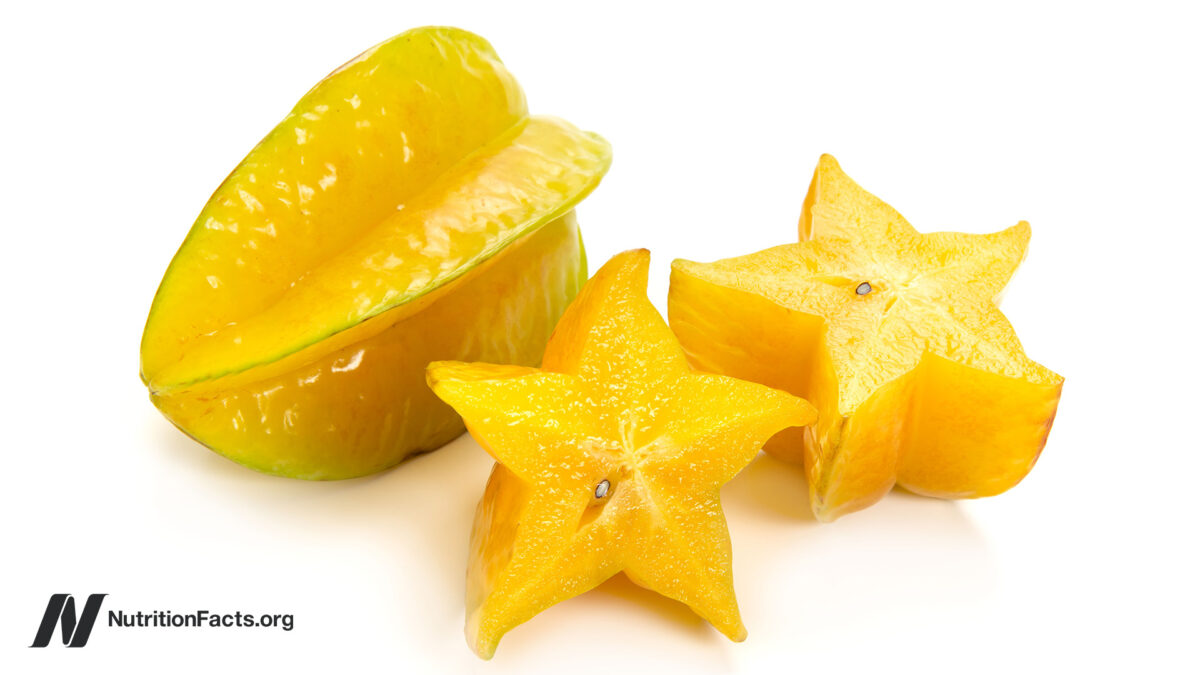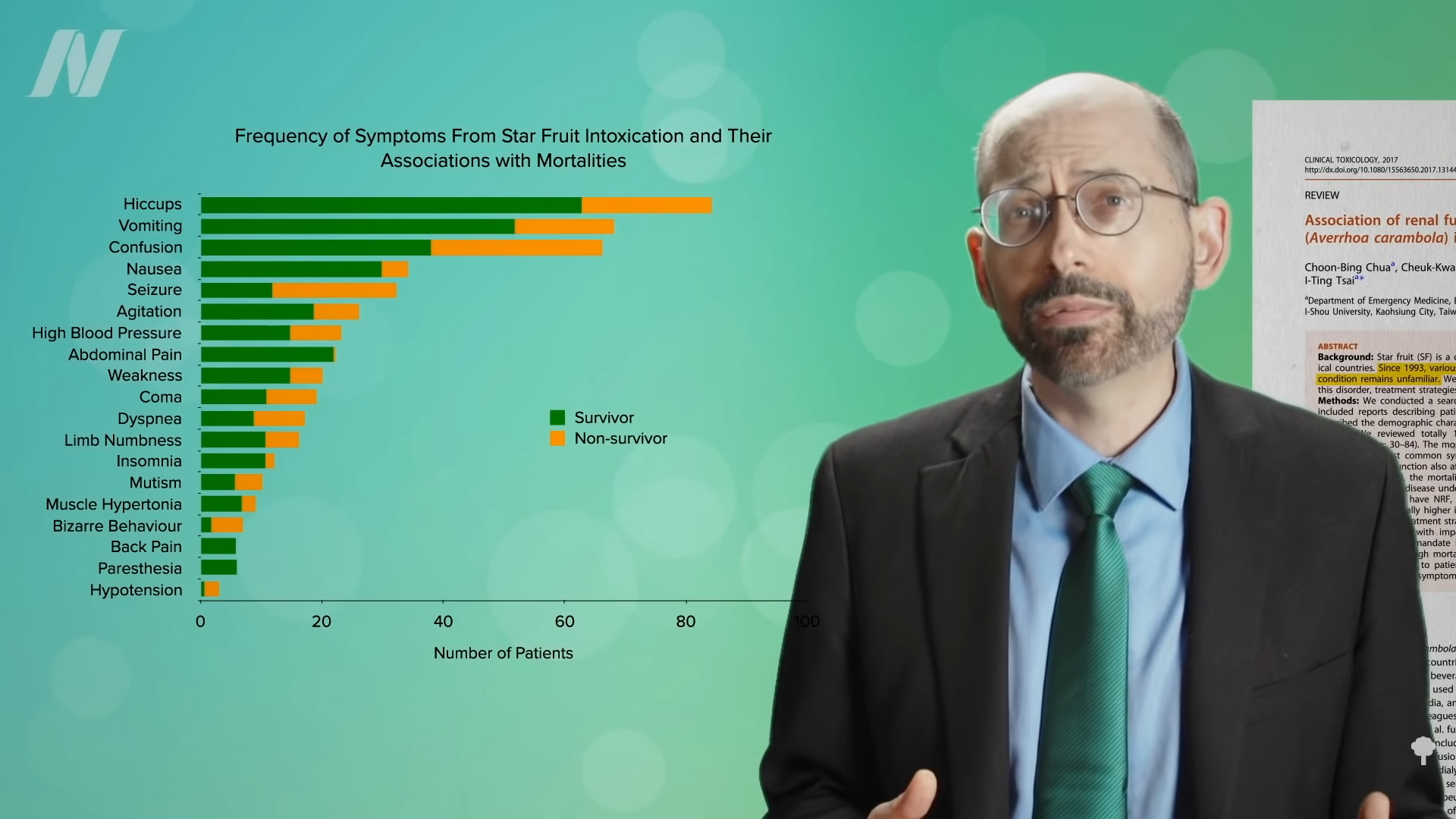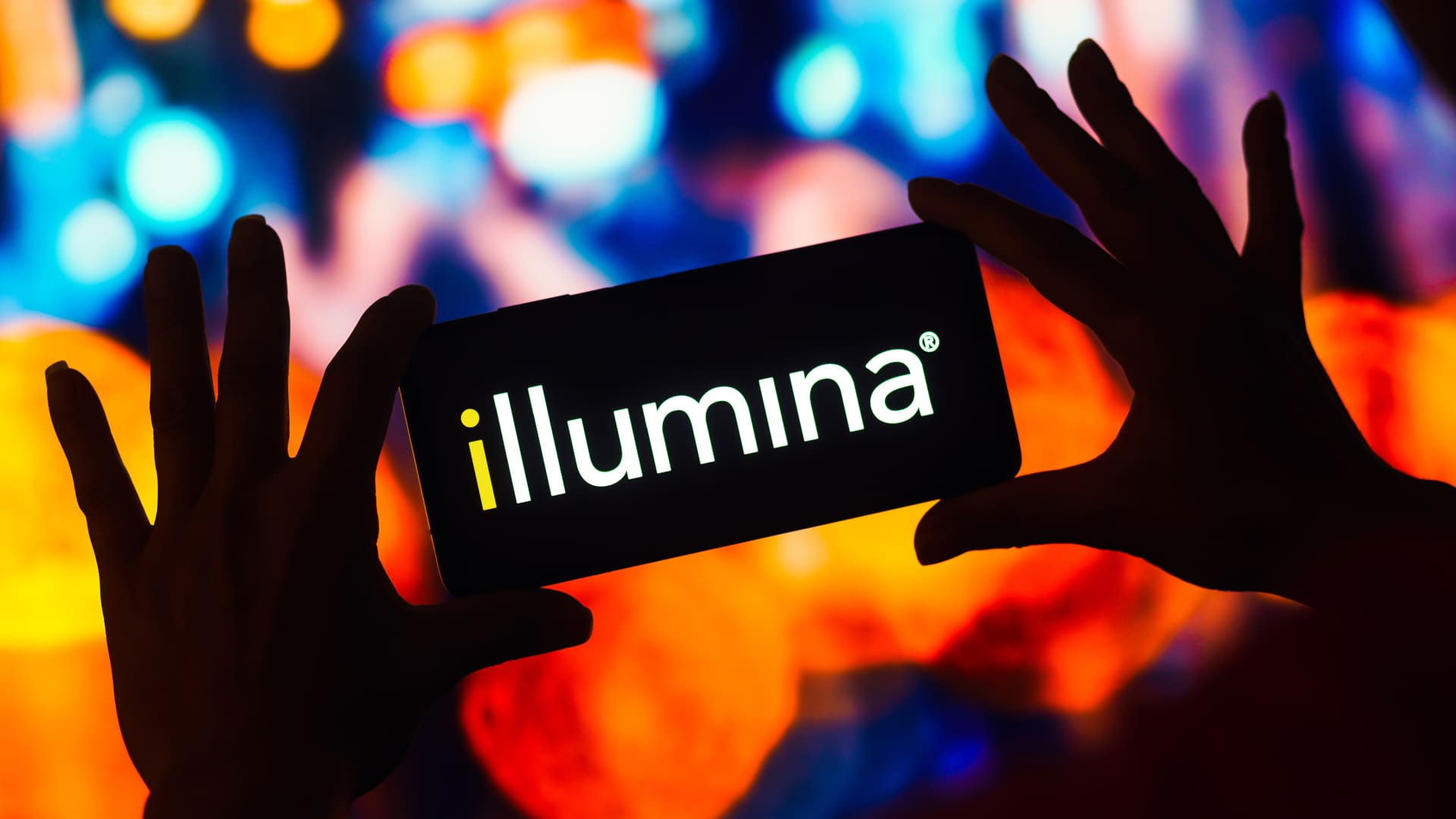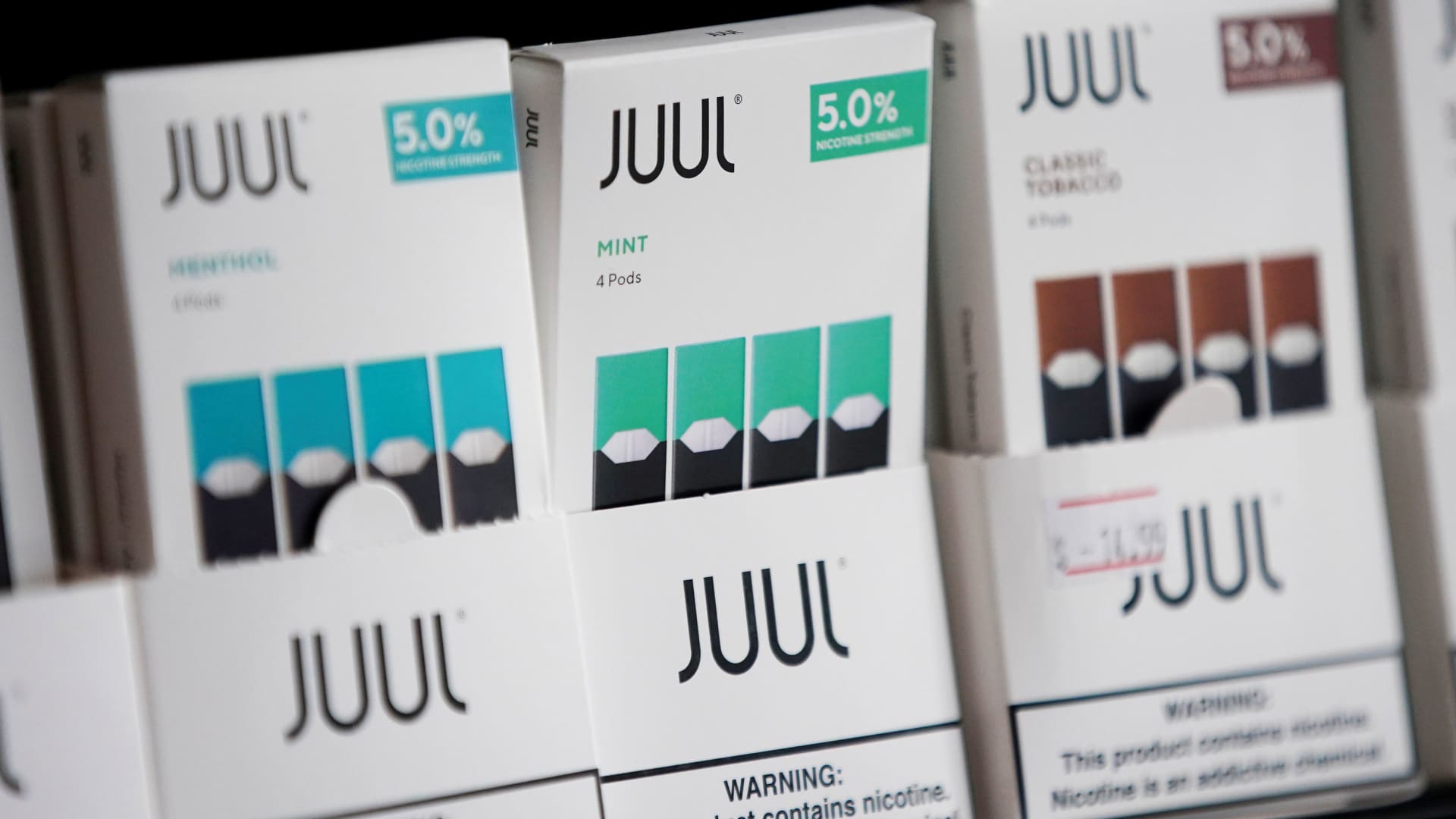The Neurotoxin in Star Fruit
Starfruit contains a neurotoxin known as caramboxin that can cause irreversible brain damage at high enough doses. If someone walks into the emergency room […]

Starfruit contains a neurotoxin known as caramboxin that can cause irreversible brain damage at high enough doses.
If someone walks into the emergency room with intractable hiccups, one of the questions the ER physician should ask is: Have you been eating star fruit?
In my video cautioning about oxalate-rich foods, Kidney Stones and Spinach, Chard, and Beet Greens: Don’t Eat Too Much, I talked about star fruit nephrotoxicity—that is, kidney toxicity. “Excessive consumption of star fruit has been associated with the development of oxalate nephropathy,” kidney damage. Star fruits aren’t that big. Less than a cup of star fruit juice or “three fruits of star fruit” can result in acute star fruit nephrotoxicity. Indeed, “ingestion of even modest quantities of star fruits can produce oxalate nephropathy” (kidney problems). “It is essential to prevent star fruit nephrotoxicity by educating the public and especially diabetics to avoid consuming star fruit, especially on an empty stomach or in a dehydrated state.”
Let’s talk about the neurotoxicity. As I discuss in my video Neurotoxicity Effects of Starfruit, we’ve known about the neurotoxic effects for more than a quarter century, but few seem to be familiar with the syndrome. As you can see below and at 1:17 in my video, it most commonly starts with hiccups, then can worsen rapidly, especially in those who already have compromised kidney function. Why? Because “this fruit contains a powerful neurotoxin that can accumulate in the blood, cross the blood–brain barrier…and eventually cause irreversible damage” to the brain. The toxin itself, named caramboxin, is normally excreted by the kidneys, so it is especially toxic to those with renal insufficiency—that is, compromised kidney function—so much so that for those with severe chronic kidney disease, a single-star fruit can put someone in seizures within three hours, a coma, then death within three days.

In a series of about a hundred cases of toxicity, consumption ranged between just half a star fruit up to 50 star fruits, with an average of about 4, but most of those participants had some sort of pre-existing kidney disease. The average number of star fruits eaten by those in the normal kidney function group before their toxic dose was more like 15. So, people with normal kidney function may be more likely to suffer from kidney damage than brain damage, which starts with the consumption of around four star fruit.
The bottom line is that those with chronic kidney disease should avoid star fruit to avoid severe intoxication. In Brazil, where the fruit is popular, there are laws to alert people about the risks. Because of its neurotoxins, star fruit should be prohibited for patients with chronic kidney disease, but even those with normal kidney function may want to avoid the fruit—just something to think about before you reach for the stars.
For more on kidney health, see related videos below.

 Koichiko
Koichiko 
































